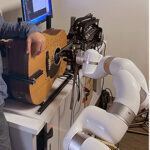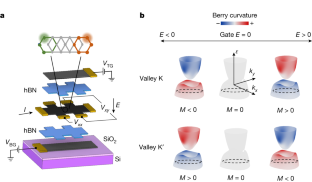2023-10-19 カリフォルニア大学サンディエゴ校(UCSD)
◆セラミックスは高温に耐え、腐食に強く軽量な特性を持つため、航空宇宙部品や切削工具など多くの用途で利用されていますが、脆弱性が課題でした。研究者たちは高エントロピー炭化物と呼ばれるセラミックスに焦点を当て、バレンス電子数が多い金属を使用することで、セラミックスの耐久性を向上させることに成功しました。これにより、セラミックスの用途が拡大し、高性能材料の分野で革命が期待されています。
<関連情報>
- https://today.ucsd.edu/story/electron-rich-metals-make-ceramics-tough-to-crack
- https://www.science.org/doi/10.1126/sciadv.adi2960
耐火性高エントロピーカーバイドの破壊抵抗を制御する重要なパラメータとしての価電子濃度 Valence electron concentration as key parameter to control the fracture resistance of refractory high-entropy carbides
Davide G. Sangiovanni,Kevin Kaufmann,and Kenneth Vecchio
Science Advances Published:13 Sep 2023
DOI:https://doi.org/10.1126/sciadv.adi2960

Abstract
Although high-entropy carbides (HECs) have hardness often superior to that of parent compounds, their brittleness—a problem shared with most ceramics—has severely limited their reliability. Refractory HECs in particular are attracting considerable interest due to their unique combination of mechanical and physical properties, tunable over a vast compositional space. Here, combining statistics of crack formation in bulk specimens subject to mild, moderate, and severe nanoindentation loading with ab initio molecular dynamics simulations of alloys under tension, we show that the resistance to fracture of cubic-B1 HECs correlates with their valence electron concentration (VEC). Electronic structure analyses show that VEC ≳ 9.4 electrons per formula unit enhances alloy fracture resistance due to a facile rehybridization of electronic metallic states, which activates transformation plasticity at the yield point. Our work demonstrates a reliable strategy for computationally guided and rule-based (i.e., VEC) engineering of deformation mechanisms in high entropy, solid solution, and doped ceramics.



